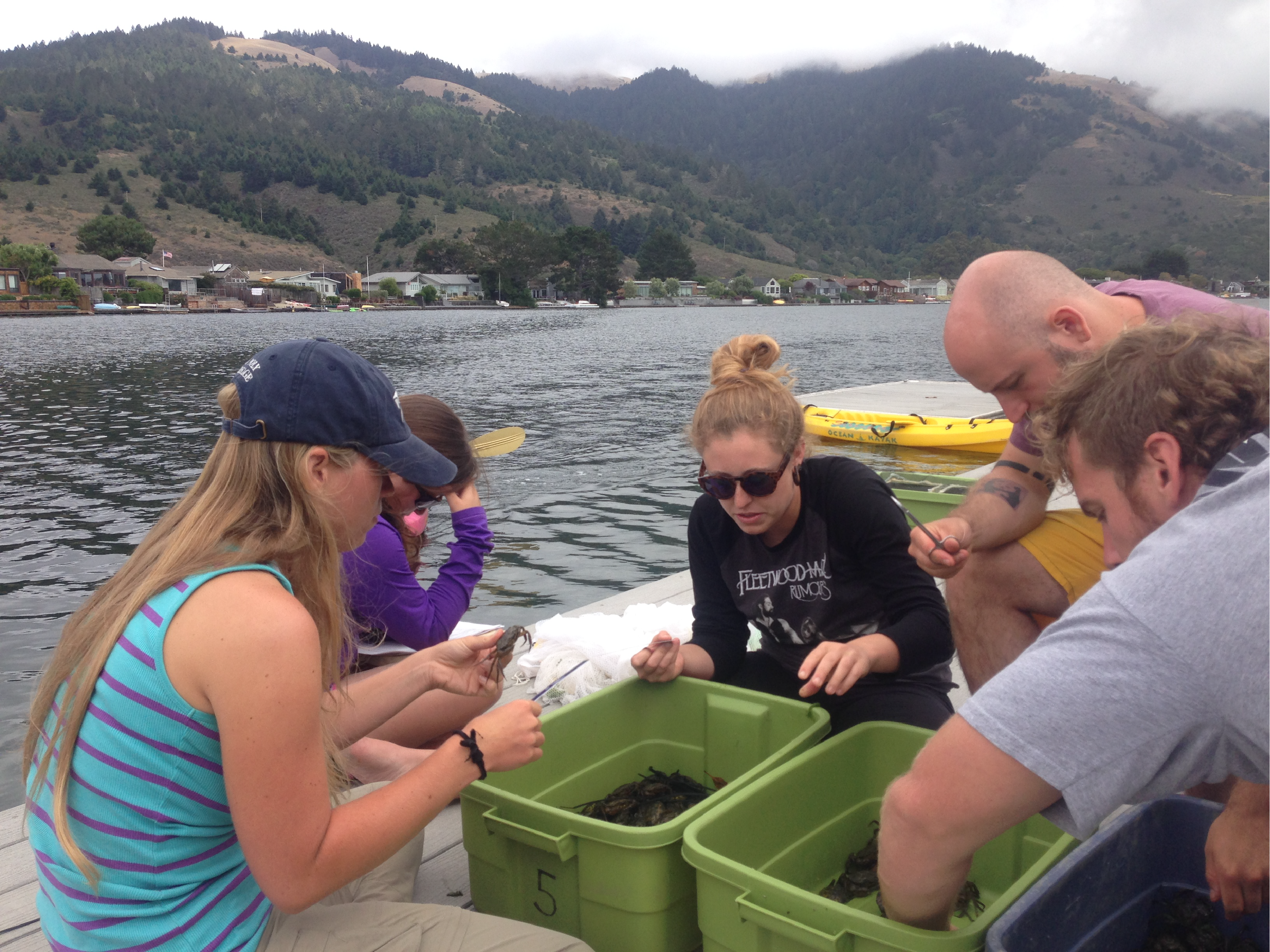Julie Gonzalez
Ph.D. Candidate
University of California, Davis
- gonzalez@ucdavis.edu
- 1 Shields Avenue, Davis, California
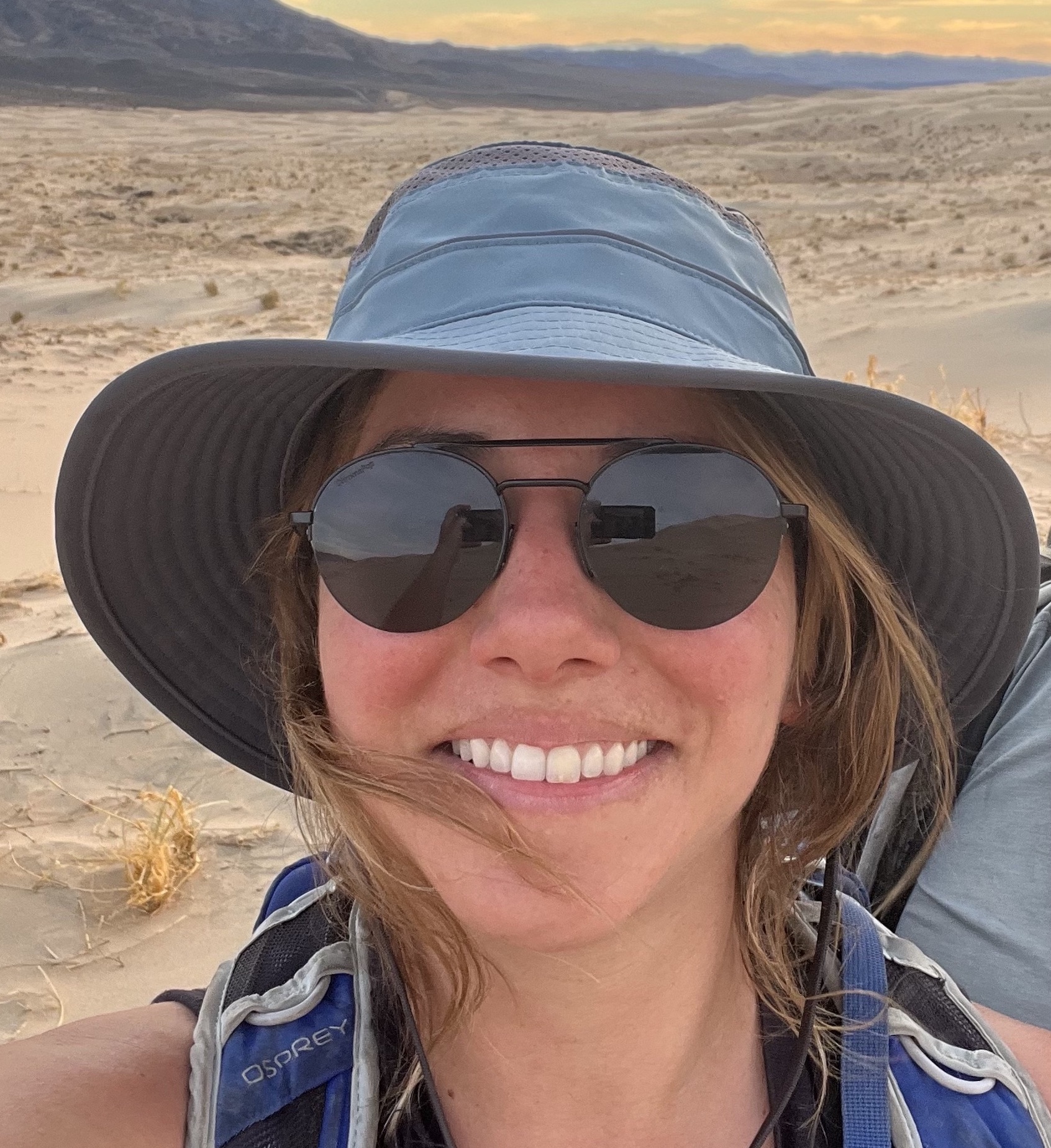

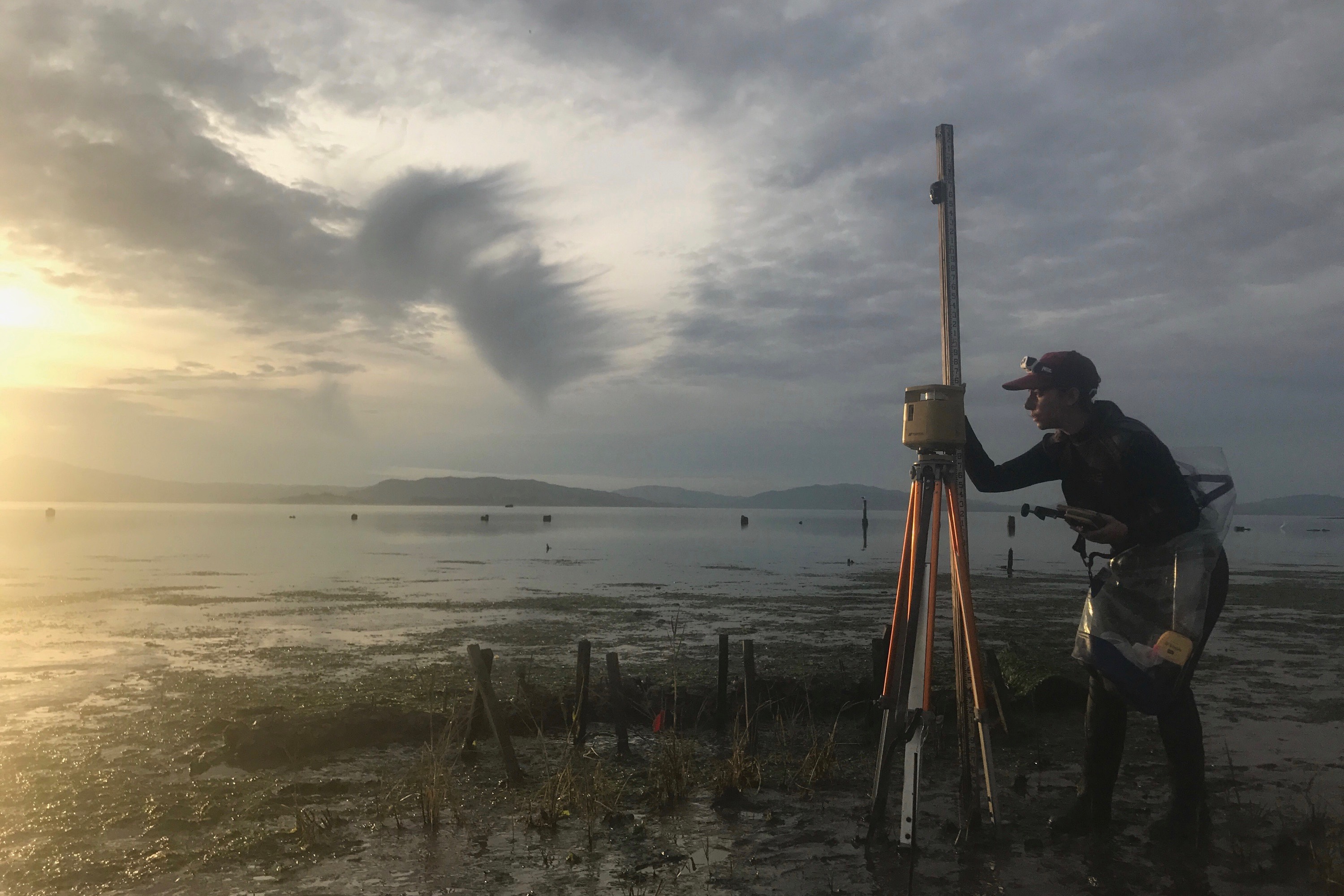
I am broadly interested in understanding how a changing climate will affect coastal communities. How will feedbacks from interacting abiotic and biotic processes modulate effects of climate change? Understanding how climate change and sea-level rise will impact whole-system interactions will aid management efforts to restore habitat or control invasive species impacts now and in the future. I also enjoy the challenge of reconciling multiple persepectives in the process of addressing environmental problems, which generally requires multiple, creative solutions.
Download CVI love the entire process of addressing complicated environmental problems; From observing, asking questions, and facilitating collboration, to experimental design and field work, to thinking about how best to visualize and disperse findings.
Humans are inherently linked to their environment. I enjoy the challenge of balancing the preservation and restoration of our natural world with the needs of all humans. I use both environmental and social science strategies to find creative, multi-beneficial solutions for environmental problems.
As a visual learner, I enjoy and understand the importance of making data accessible to a variety of groups through visuals. Over the years I have acquired the R, Illustrator and InDesign skills necessary to generate creative data visualizations.
How marsh plants respond to sea-level rise and increased inundation may vary based on the plants' position along the salt marsh elevation gradient and the disturbance regime to which they are acclimated. Some habitats may withstand sea-level rise induced stressors whereas others may be more susceptible, which may lead to a loss of diversity and function within the larger system. I aim to understand how ecological processes change with increased inundation from flooding and sea-level rise in individual habitats along the marsh elevation gradient, and how these changes may impact the animals that rely on this vegetation for food and refuge.
How will increased inundation resulting from projected sea-level rise impact different habitats within the transitional area (“transition zone”) in coastal systems? Specifically, how will increased inundation impact low marsh vegetation (a monoculture of the ecologically important native cordgrass, Spartina foliosa) relative to high marsh vegetation?
I am assessing the impact of SLR and flooding on high marsh and low marsh vegetation (S. foliosa) in China Camp State Park, San Francisco Bay, by manipulating inundation using experimental marsh boxes that hold water for an extended period after the tide receds (picture on right).
Article about the project in the Friends of China Camp newsletter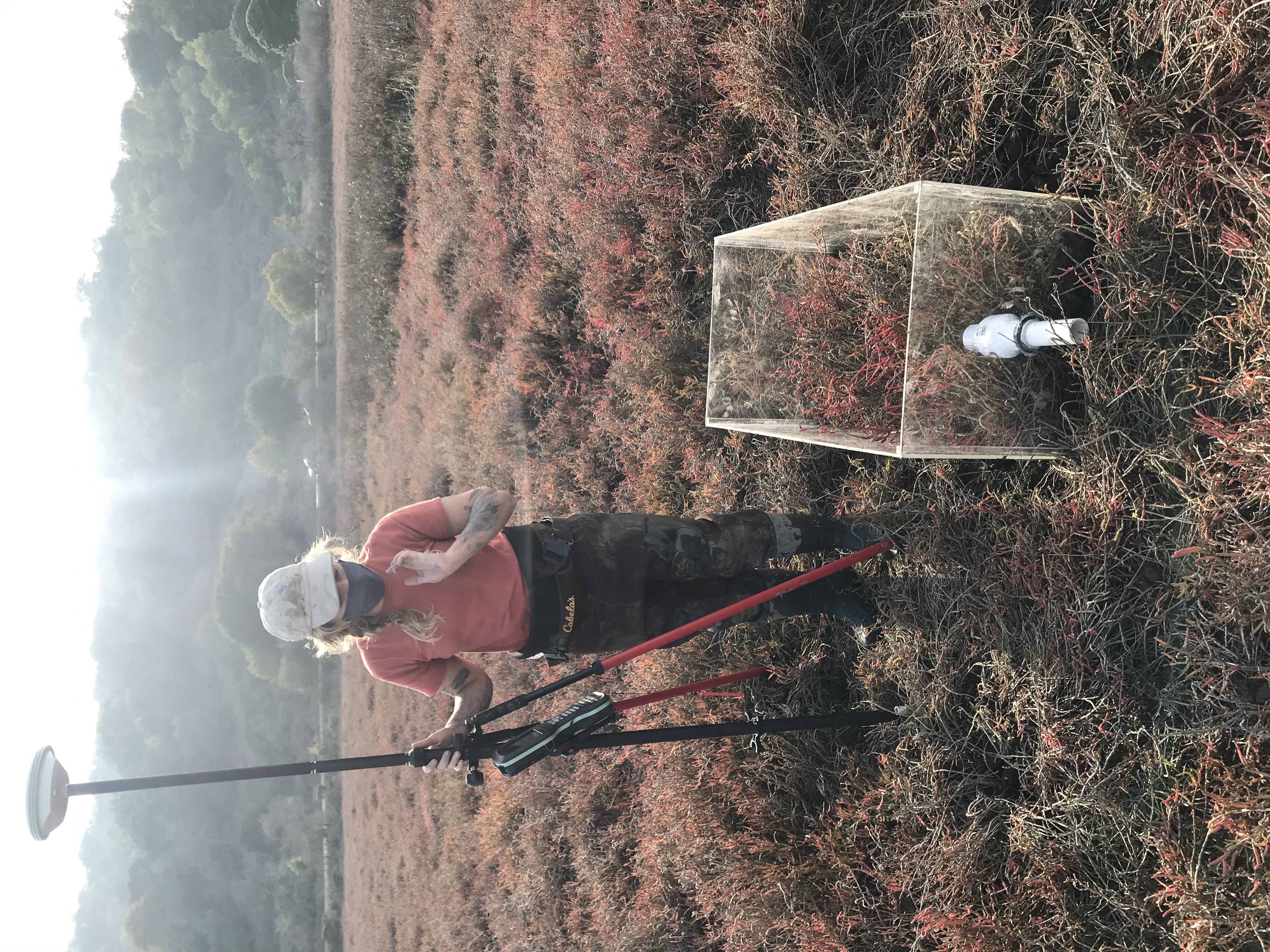
Invasive species can decrease abundance of native species and impact nutrient cycling in coastal and other systems. Negative impacts from invasive species may alter marsh plants’ susceptibility to sea-level rise stressors like inundation and salinity. In order to persist, marsh vegetation will likely need to withstand both changes in the physical environment from sea-level rise and impacts from invasive species.
How will the direct and indirect impacts from the invasive European green crab Carcinus maenas interact with sea-level rise to impact S. foliosa?
I am evaluating the interacting effects of sea-level rise and invasive crabs on S. foliosa in the San Francisco Bay National Estuarine Research Reserve's China Camp site. I deployed a cage enclosure experiment where C. maenas were enclosed into plots with S. foliosa. These enclosures are subject to a second treatment that simulates the extended tidal inundation projected with sea-level rise using experimental "marsh boxes" that holds water after the tide receds. I am looking at processes affecting marsh vegetation by monitoring changes to sediment characteristics and nutrient cycling, and benthic and surface feeding macroinvertebrate abundance and community composition.
Article about the project in the Friends of China Camp newsletter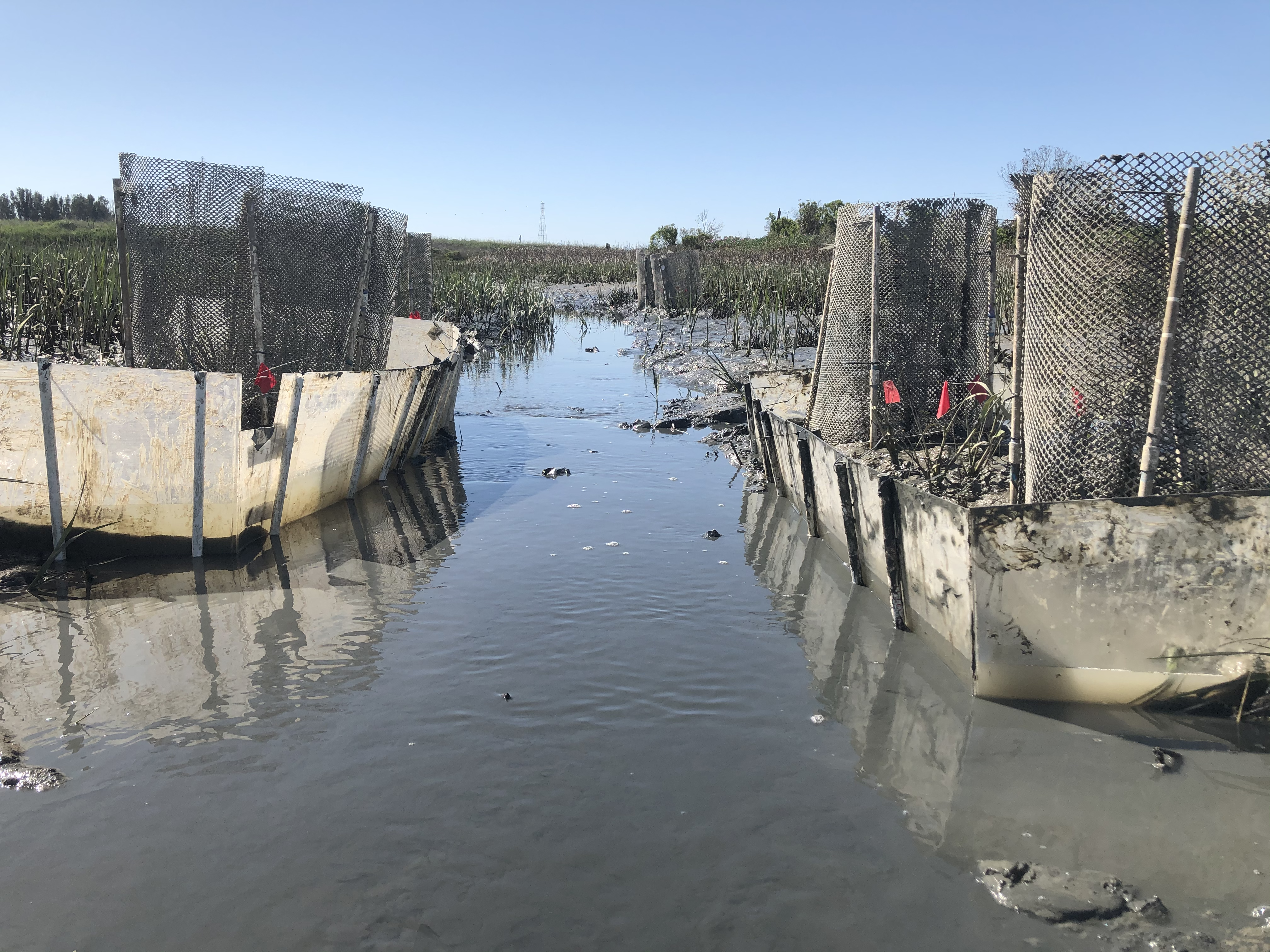
Understanding why habitat restoration is viewed as successful or not is key to evaluating past projects, planning future projects, and building support. Additionally, connecting public perceptions to the restoration process and habitats can improve project outcomes and generate greater public support. Yet, restoration science lacks fundamental information about the extent to which restoration actions align with measured ecological outcomes and social perceptions. Focusing on tidal marshes, we gathered qualitative and quantitative data on public perceptions of these habitats and restoration through focus groups in three estuaries in Oregon, USA. We also gathered environmental data from nine restoration projects spanning these estuaries to understand ecological responses to restoration focusing on responses of hydrology and vegetation. We mined project reports for mentions of priority project goals from an ecological perspective to compare with community priorities. Lastly, we interviewed restoration managers to provide context for the environmental data. Across our sample, hydrology scores increased with the number of restoration actions, although no clear relationship emerged between restoration action and vegetation scores. We developed a linking matrix to compare social and ecological data, and found that, although restorationists and the public have similar social values, assessments of projects do not often include the highest ranked priorities of community members and rarely track human factors as part of restoration assessment. Based on these findings, we suggest methods to include these social values in future projects and for improved communication between restorationists and the general public.
Gonzalez, J.A., E.D. Grosholz, M. Haeffner, V. Robertson-Rojas, S. Schooler, S. Comet, P. Engelmeyer, S. Finley, C.E. de Rivera. (2023). Improving Tidal Marsh Restoration Using Both Stakeholder Perceptions and Ecological Metrics. Submitted to Ecology & Society.
Haeffner, M., S. Finley, C.E. de Rivera, E.D. Grosholz, J.A. Gonzalez, V. Robertson-Rojas, S. Schooler, S. Comet, P. Engelmeyer. (2022). Common ground: similar perceptions across public and managers about the values of estuarine restoration. Submitted to Ecology & Society.
Gonzalez, J., A., Brooks A., Comet S., Finley S., Grosholz E.D., Haeffner M., Koren A., Robertson-Rojas, V., Schooler, S., de Rivera, C.E. (2021 November). Determining Salt Marsh Restoration Outcomes using Focus Groups and Ecological Data. Invited Talk presented at the Cape Perpetua Land-Sea Symposium 2021 (remote).
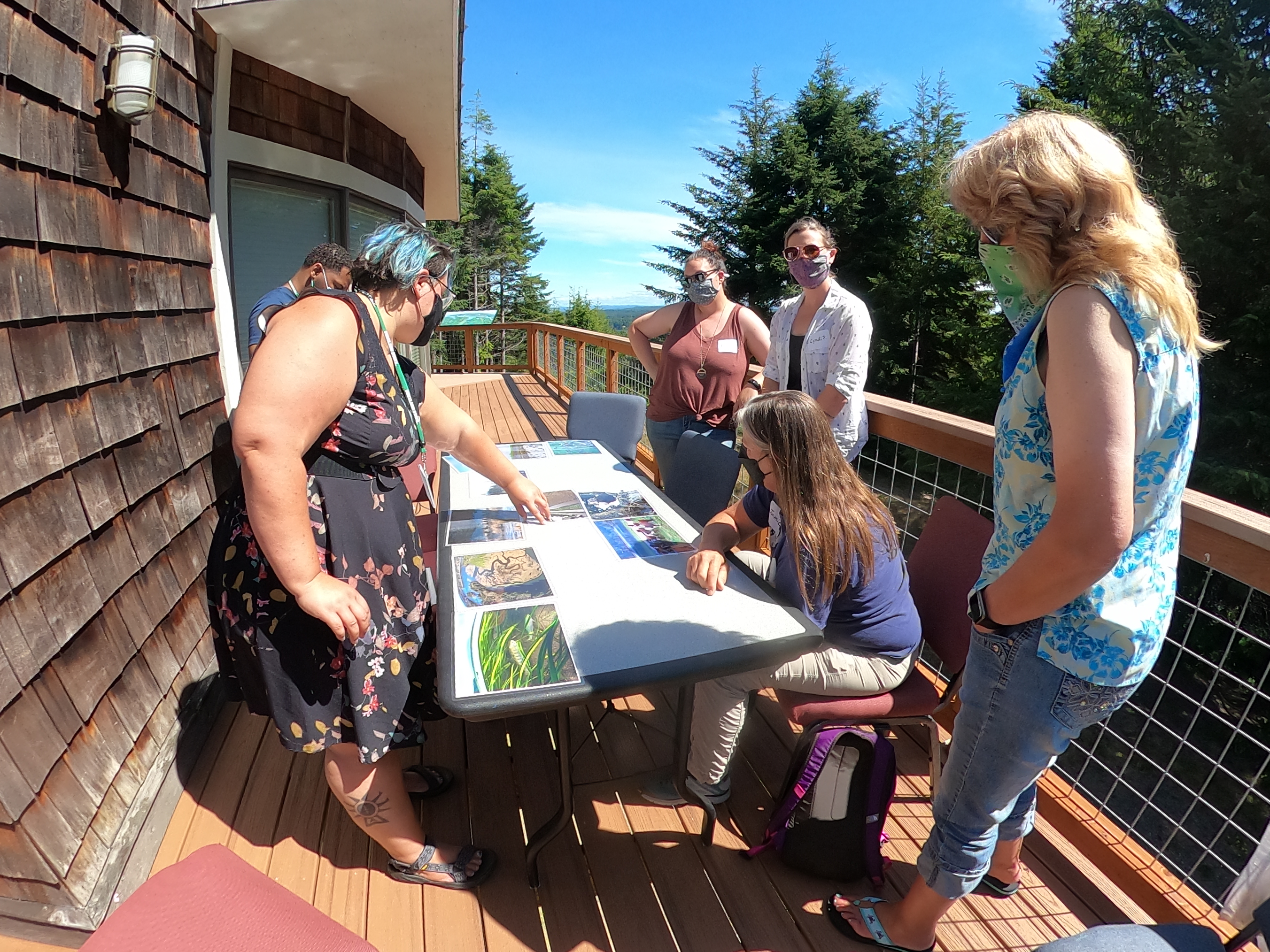
Focus group participants rank a series of photos in Coos Bay, OR
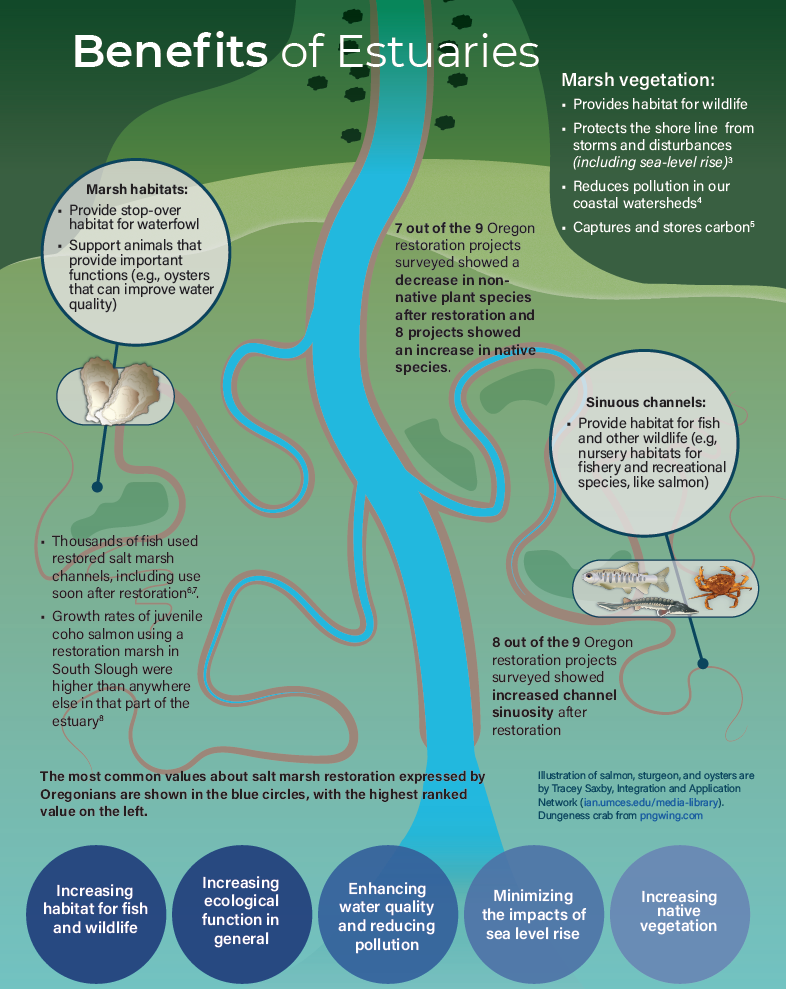
As part of the brochure for our project partner, The Wetlands Conservancy, I created this diagram to link restoration project assessments to social values derived from focus groups. The team and I developed the content and I created the design.
The Southern California Wetlands Recovery Project (WRP) brings together multiple stakeholders (scientists, landowners, government and non-government agencies) to restore wetlands throughout southern California.
I was involved in the culmination of a 5 year effort to develop and produce the Regional Strategy 2018, an informational directive with goals and quantitative objectives to restore wetlands from Point Conception to the Tijuana Estuary. I worked closely with the San Francisco Estuary Institute to review and bolster the science, create and update data visualizations, and assist with design and layout of the Strategy.
I also was asked to write a blog post for California Sea Grant about my experience and the process of creating the Strategy.
Lowe, J., E. Stein, E. Beller, J. Collins. [and 16 others, including J.A Gonzalez as Contributing Author; Designer] (2018) Wetlands on the Edge: The Future of Southern California’s Wetlands: Regional Strategy 2018. Prepared by the California State Coastal Conservancy, Oakland, Ca.
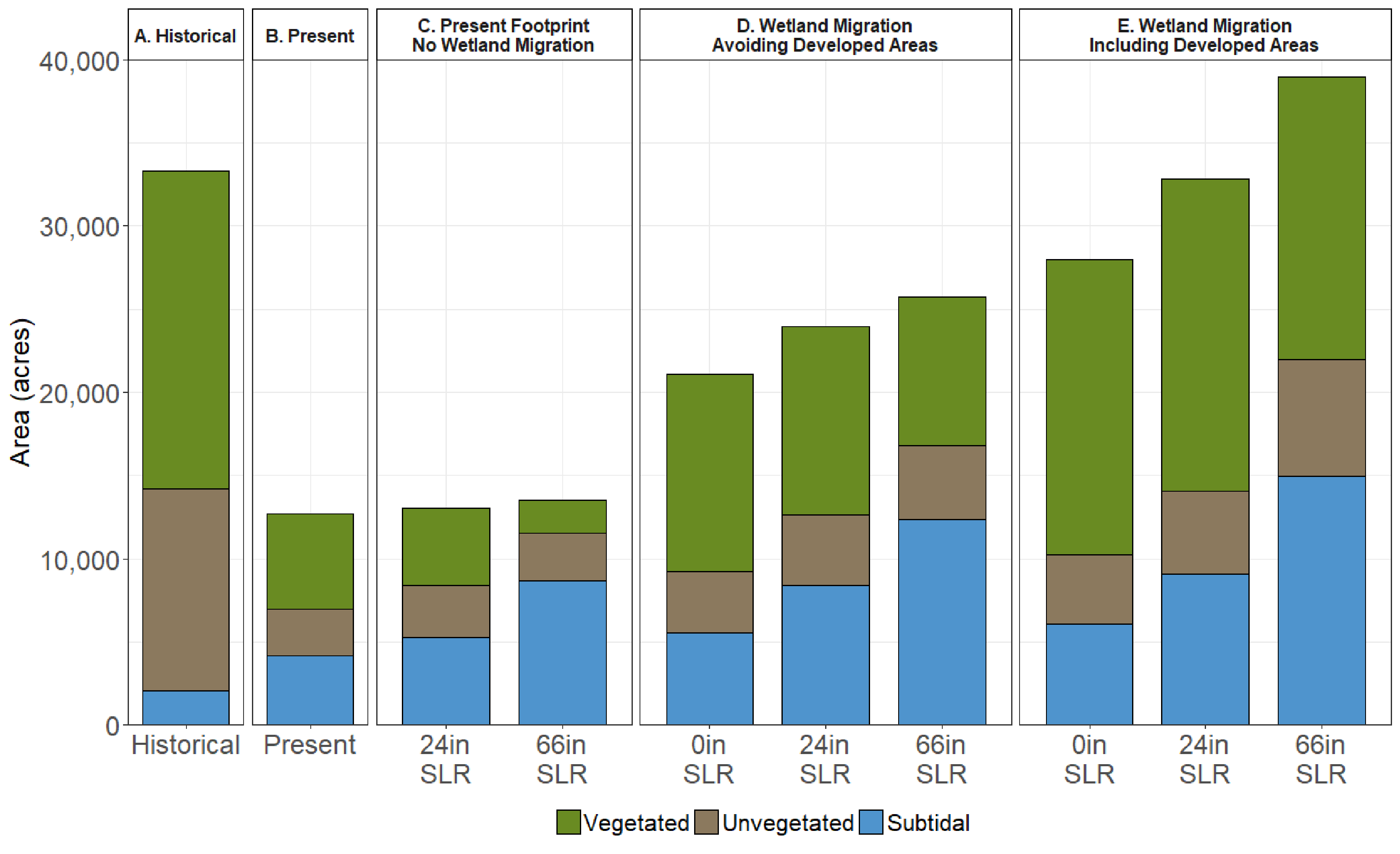
I created this plot to show wetland change over time, and future projections with and without intervention. The data and analyses were provided by Regional Strategy authors.
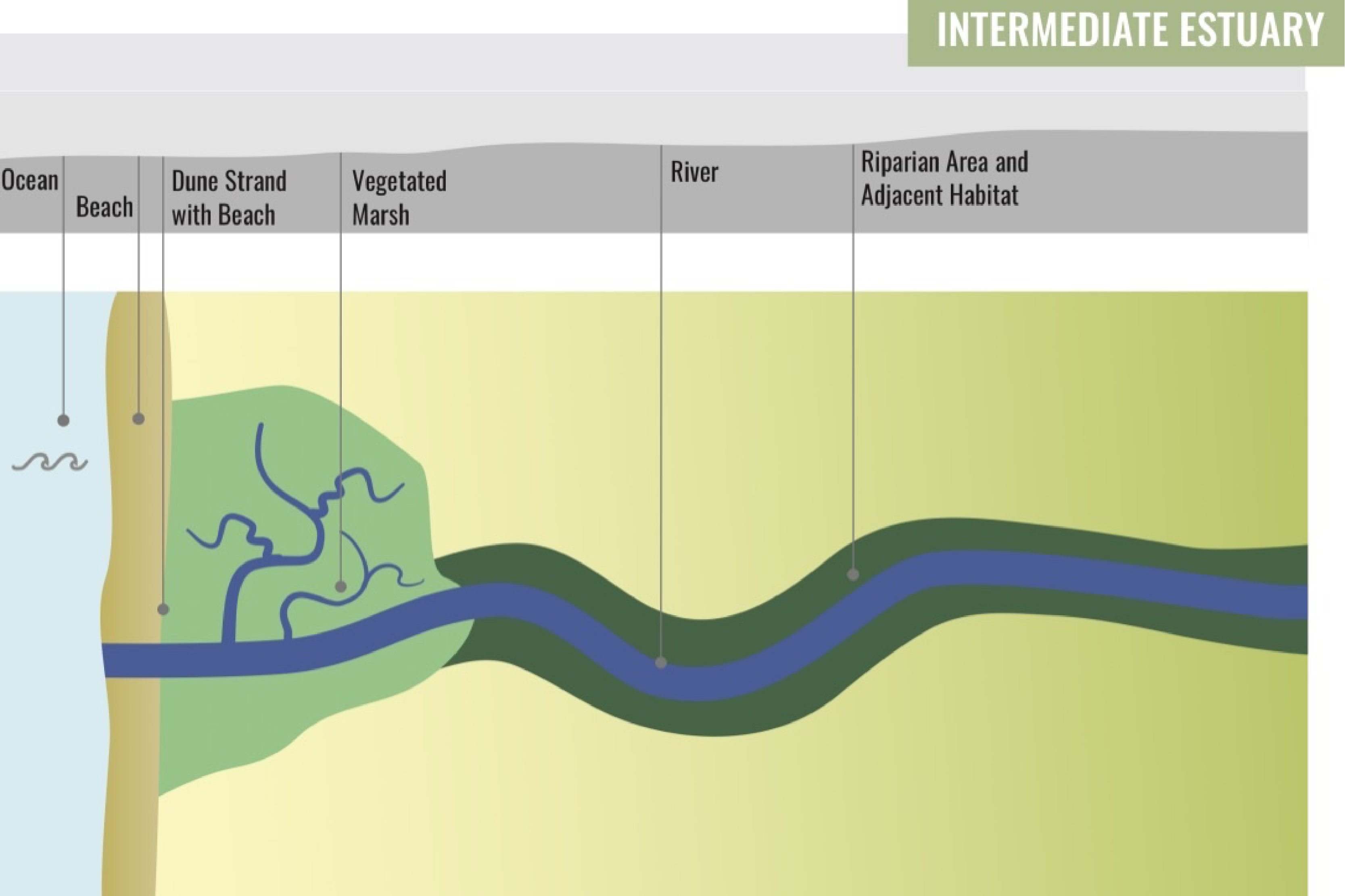
I created visualizations for all of the eight archetypes that the WRP designated for southern California; this is an example of an Intermediate Estuary.
Currently a massive restoration effort is underway in San Francisco Bay to re-establish the native cordgrass, Spartina foliosa. I collaborated closely with the Smithsonian Environmental Research Center and the Invasive Spartina Project to explore the distribution of the invasive European green crab, Carcinus maenas and how the crab impacts S. foliosa restoration efforts. Through multiple manipulative field experiments and monitoring I discovered that C. maenas is present at sites where S. foliosa fail to establish and the crab negatively impacts newly planted cordgrass through direct and indirect mechanisms.
Gonzalez, J. A., G. M. Ruiz, A. L. Chang, and K. E. Boyer. (2022). Negative effects of a non-native crab on the restoration of cordgrass in San Francisco Bay. Submitted to Ecological Restoration.
Gonzalez, J., A., G. M. Ruiz, A. L. Chang, and K. E. Boyer. (2018 December). Distribution of an invasive crab in San Francisco Bay and implications for cordgrass restoration. Contributed Talk presented at Restore America's Estuaries National Summit, Long Beach, CA.
Gonzalez, J., A., G. M. Ruiz, A. L. Chang, and K. E. Boyer. (2017 August). Factors affecting the distribution of an invasive crab and its impacts on cordgrass restoration. Poster Session at the annual meeting of the Ecological Society of America, Portland, OR.
Gonzalez, J., A., G. M. Ruiz, A. L. Chang, and K. E. Boyer. (2017 June). A Potential Trophic Cascade and Impacts on Cordgrass Restoration. Contributed Talk presented at the annual meeting of the Society for Wetland Scientists, San Juan, PR.
Gonzalez, J., A., G. M. Ruiz, A. L. Chang, and K. E. Boyer. (2016 November). Distribution and impacts of a nonnative crab on cordgrass restoration in San Francisco Bay: A predator-mediated interaction? Poster session at the annual meeting of the Western Society of Naturalists, Monterey, CA.
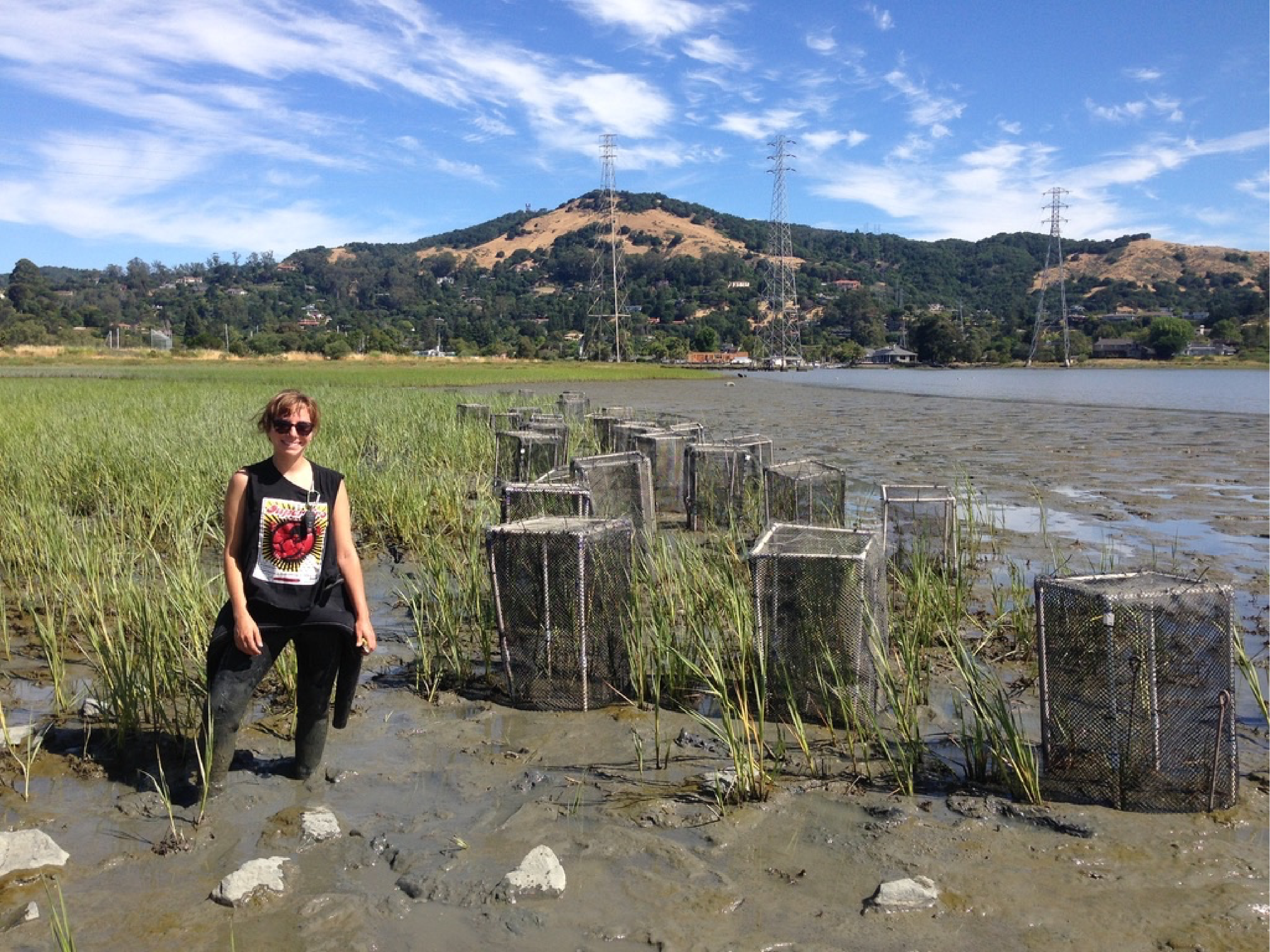
One element of my thesis was a field cage experiment, designed to uncover impacts of a native and invasive crab on the native cordgrass, Spartina foliosa.
Environmental and social issues are often intermingled.
A recent symposia series facilitated conversations between social services and water sector representatives about homelessness impacts on the Santa Ana River watershed. These events spurred this similar effort, focused on Ventura County watersheds. Collaborating closely with representatives from multiple agencies in Ventura County (Watersheds Coalition of Ventura County, Public Works, Continuum of Care), I organized and facilitated a workshop to discuss the issue and come up with a plan for Ventura County to address environmental impacts of homelessness, while being concious of and sensitive to the human right to water.
This half-day event was extremely successful; over 60 people from multiple sectors and agencies attended and participated. We had two panels; one composed of Ventura County social services representatives, and one composed of Ventura County water and environmental sector representatives. We also had presenters from Orange County discuss some of the beneficial outcomes and action items that came out of their workshops on this topic. We identified barriers to mitigating some of the more pressing issues, such as a lack of regulation on bacterial and trash loads in the rivers and potential avenues to resolve those barriers. All those involved gained new connections and knowledge of new mechanisms for multi-sector collaboration, including an Esri dashboard application for reporting and addressing homeless encampments.
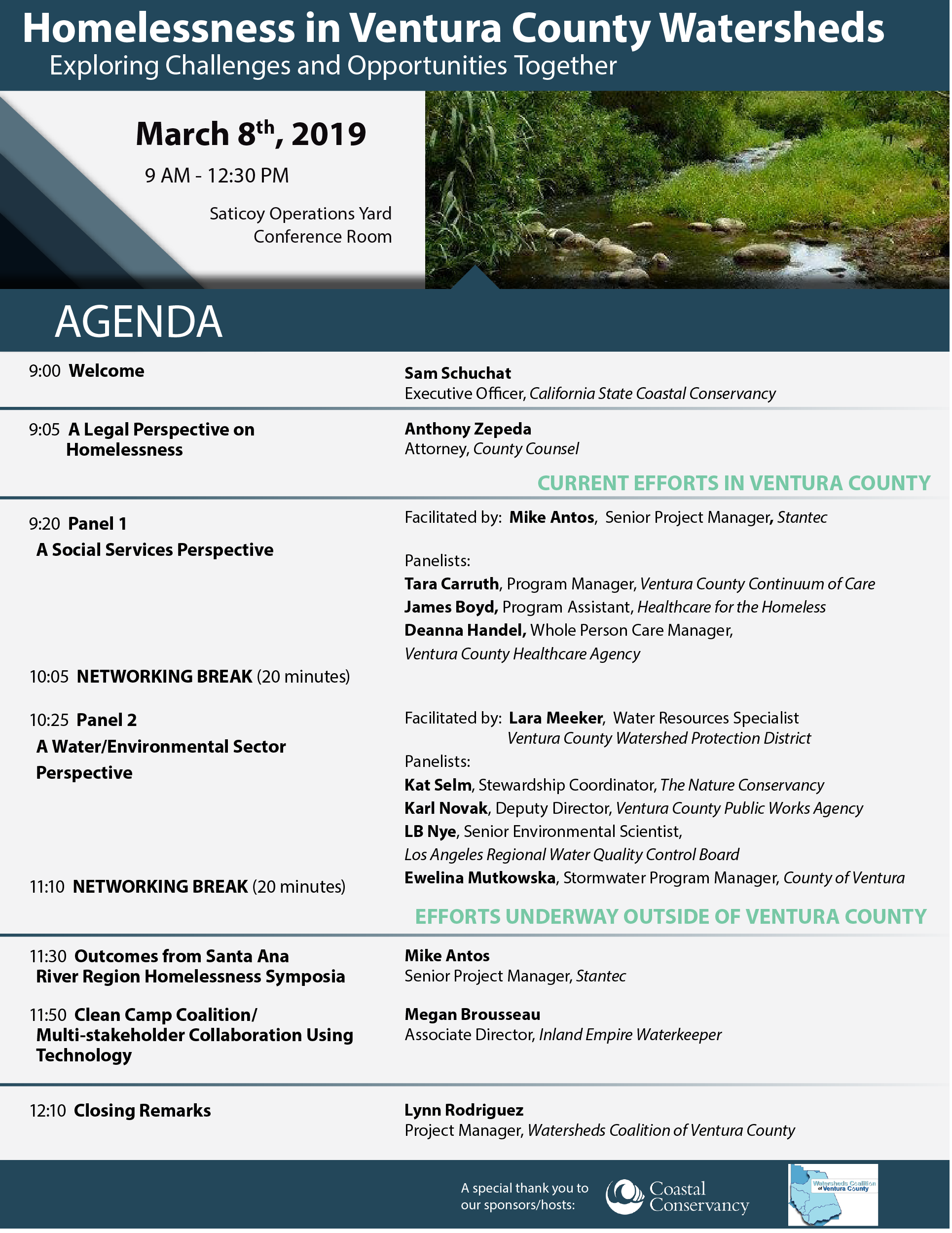
I organized and designed the workshop agenda.
Collaborating closely with the Conservation Biology Institute, my colleagues with the Coastal Conservany and the Southern California Wetlands Recovery Project (WRP) and I created the Marsh Adaptation Planning Tool (MAPT), an online platform to house the WRP's Regional Strategy 2018 and all of the associated mapping data used in the process of creating the document. MAPT also contains an additional tool that allows restoration practictioners an easy and straightforward way to apply for the WRP Work Plan. Before and after the site launch, I was involved in deciding on content for the site, designing the look and feel of the individual pages, developing and testing the Work Plan application tool, and developing and updating some of the mapping layers available on this platform.
Visit the Marsh Adaptation Planning Tool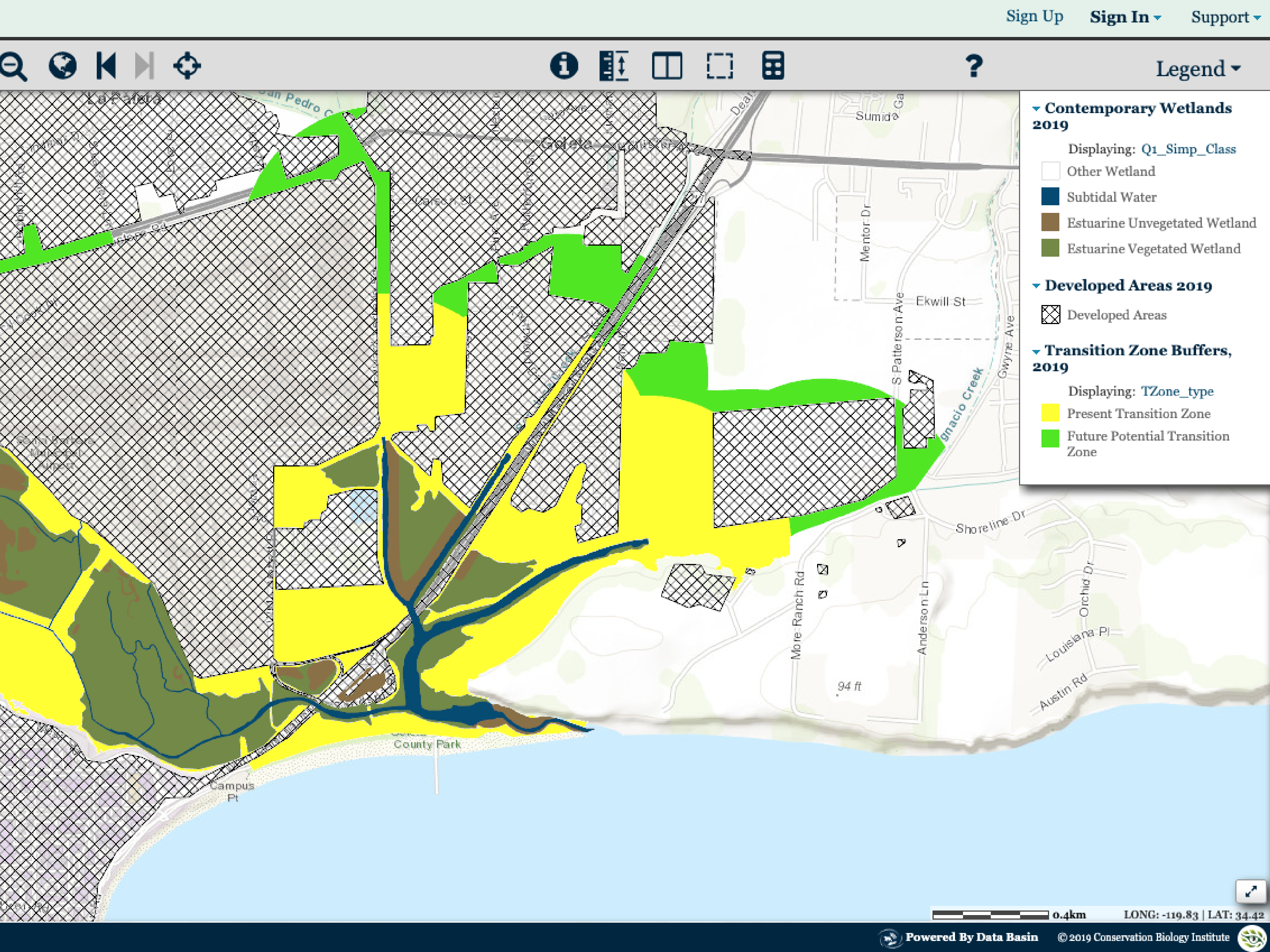
During my master's I received the Sally Casanova Pre-Doctoral scholarship, which provides summer research funding to support a project in partnership with a potential PhD advisor. Collaborating with my now PhD advisor, Ted Grosholz at UC Davis, I used this funding to study populations of C. maenas and the native red rock crab, Cancer productus in Sooke Inlet and Bamfield Inlet on Vancouver Island, British Columbia. C. productus prey on C. maenas and can limit their populations. My findings suggest that C. maenas inhabit a broad salinity range but C. productus avoid areas of low salinity. I also found that eelgrass is an important source of refuge where these two species co-occur. C. maenas negatively impact eelgrass in other locations and, when released from predation in the low-salinity areas avoided by C. productus, may negatively influence eelgrass. This work ignited my interest in the ways a changing climate will induce novel stressors like variability in salinity and temperature, and in turn how these changes will influence both species interactions and vegetative refuge that prey utilize.

Sooke Inlet, B.C. - I gathered physical data along with crab surveys and predation assays
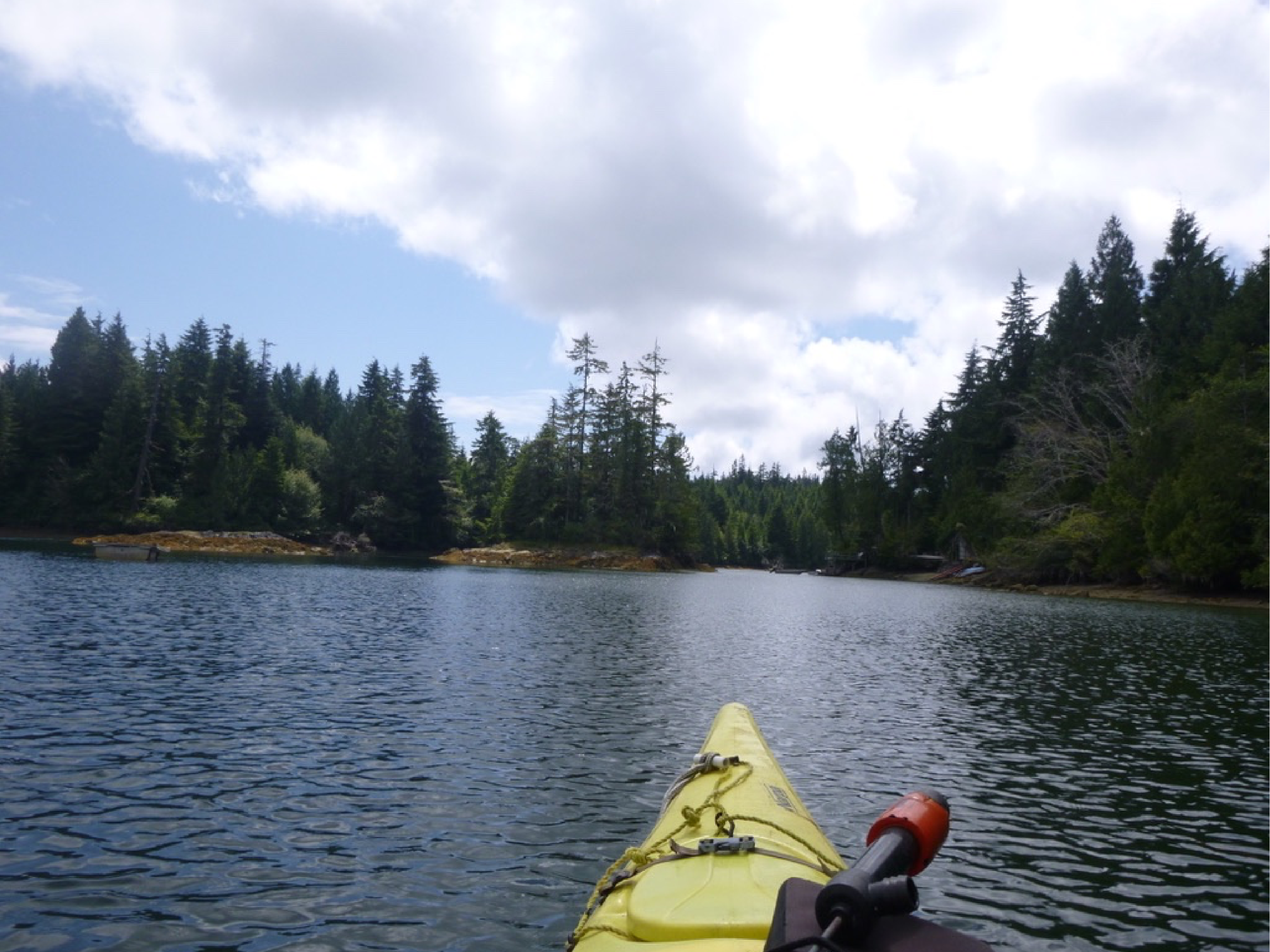
Site scouting in Grappler Inlet, Bamfield, B.C.
This was a joint project with researchers from UC Davis, Portland State University, the Smithsonian Environmental Research Center, and we worked with the Gulf of the Farallones National Marine Sanctuary on the community outreach portion. We studied a large population of the invasive European green crab, Carcinus maenas in a semi-enclosed lagoon system in Stinson Beach, CA. Studying the population dynamics in this system informed our knowledge of factors that influence the success of an invasive species eradication program. These include using traps that target all size classes of the species, factoring in a target number of the species to remove before the next breeding season, and the importance of native predators in ensuring the population is either eradicated or stays at inconsequential levels. Importantly, this research maintains the idea that the focus of invasive species eradication programs should be on prevention of the establishment of invasive species.
Gonzalez, J., A., A. L. Chang, L. McCann, E. Pollard, M. Bradley, M. Marraffini, C. E. de Rivera, G. M. Ruiz and E. D. Grosholz. (2015 November). Demonstrating overcompensation in response to intensive removal of an invasive marine crab. Poster session at the annual conference of the Coastal and Estuarine Research Federation, Portland, OR.
Grosholz, E., Ashton, G., Bradley, M., Brown, C., Ceballos-Osuna, L., Chang, A., de Rivera, C., Gonzalez, J., Heineke, M., Marraffini, M. and McCann, L., 2021. Stage-specific overcompensation, the hydra effect, and the failure to eradicate an invasive predator. Proceedings of the National Academy of Sciences, 118(12).
Green Crab Project Website